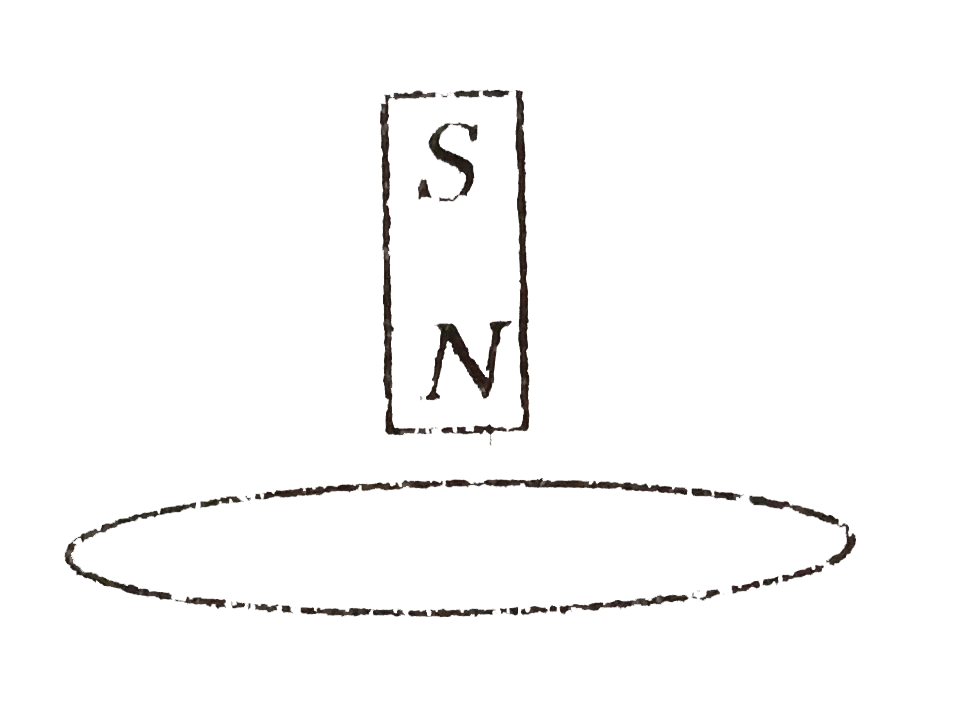A short magnet is moved along the axis of a conducting loop. Show that the loop repels the magnet if the magnet is approaching the loop and attracts the magnet if it is going away from the loop. Two circular loops are placed coaxially but separated by a distance. A battery is suddenly connected at one of the loops establishing a current in it. Will there be a current induced in the other loop? If yes, when does the current start and when does it end? Do the loops attract each other or do they repel?
Step by step video & image solution for A short magnet is moved along the axis of a conducting loop. Show that the loop repels the magnet if the magnet is approaching the loop and attracts the magnet if it is going away from the loop. Two circular loops are placed coaxially but separated by a distance. A battery is suddenly connected at one of the loops establishing a current in it. Will there be a current induced in the other loop? If yes, when does the current start and when does it end? Do the loops attract each other or do they repel? by Physics experts to help you in doubts & scoring excellent marks in Class 12 exams.
Updated on:21/07/2023Topper's Solved these Questions
- ELECTROMAGNETIC INDUCTIONBOOK - HC VERMACHAPTER - ELECTROMAGNETIC INDUCTIONEXERCISE - Objective 1
12 Videos
- ELECTROMAGNETIC INDUCTIONBOOK - HC VERMACHAPTER - ELECTROMAGNETIC INDUCTIONEXERCISE - Objective 2
10 Videos
- ELECTROMAGNETIC INDUCTIONBOOK - HC VERMACHAPTER - ELECTROMAGNETIC INDUCTIONEXERCISE - Worked Out Examples
29 Videos
- ELECTRIC FIELD AND POTENTIALBOOK - HC VERMACHAPTER - ELECTRIC FIELD AND POTENTIALEXERCISE - Exercises
75 Videos
- ELECTROMAGNETIC WAVESBOOK - HC VERMACHAPTER - ELECTROMAGNETIC WAVESEXERCISE - Exercises
9 Videos
Similar Questions
A metallic loop is placed in a nonuiform magnetic field. Will an emf be induced in the loop?
View SolutionA bar magnet is kept along the axis of a conducting loop. When the magnet is moved along the axis, a current is seen in the loop. Which force is responsible for driving electrons in the loop if the observer is in
(a) Reference frame attached to the loop.
(b) Reference frame attached to the magnet.
View Solution
Knowledge Check
A square conducting loop of side length L carries a current I.The magnetic field at the centre of the loop is
Aindependent of LBproportional LCinversely proportional to LDlinearly proportional to LA square loop of side a carries a current I. The magnetic field at the center of the loop is
A2μ0I√2πaBμ0I√2πaC4μ0I√2πaDμ0IπaA: The magnetic moment of a current carrying planar loop does depend on the space of the loop.
R: The magnetic moemnt is a vector quantity.AIf both Assertion & Reason are true and the reason is the correct explanation of the assertion then mark (1)BIf both Assertion & Reason are true but the reason is not the correct explanation of the assertion, then mark 2.CIf assertion is true statement but Reason is false, then mark (3)DIf both Assertion and Reason are false statements, then mark (4)
A rectangular loop carrying a current i is placed in a uniform magnetic field B. The area enclosed by the loop is A. If there are n turns in the loop, the torque acting on the loop is given by
View SolutionAssertion A magnetic is dropped along the axis of a circular conducting loop as shown in figure. Then, acceleration of magnet is always less than g.
Reason when magnet is above the loop, then it will repel the magnet and when it is below the loop, then it will attract the magnet.
Reason When magnet is above the loop, then it will repel the magnet and when it is below the loop, then it will attract the magnet.

View SolutionA circular loop carrying a current is replaced by an equivalent magnetic dipole. A point on the loop is in
View SolutionA straight wire carrying a current is turned into a circular loop if the magnitude of magnetic moment associated with it is M then the length of the wire will be
View SolutionA circular loop carrying a current is replaced by an equivalent magnetic dipole. A point on the axis of the loop is in
View Solution
